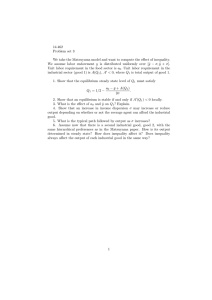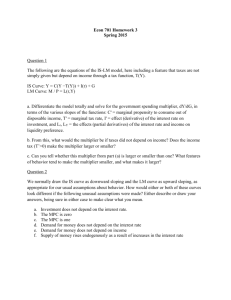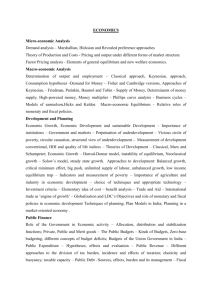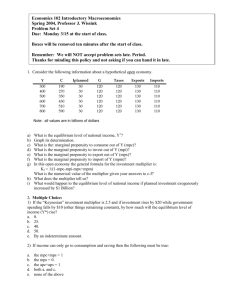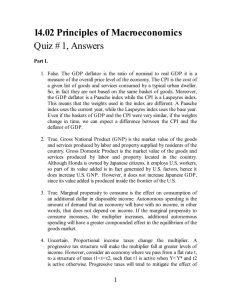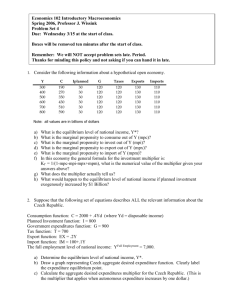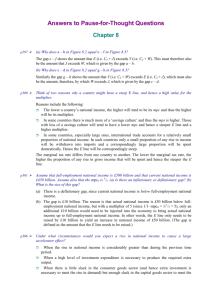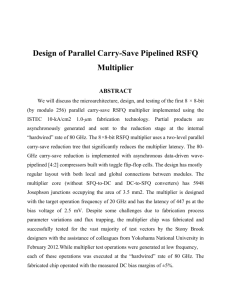Macroeconomics Problem Set 1 Solutions
advertisement
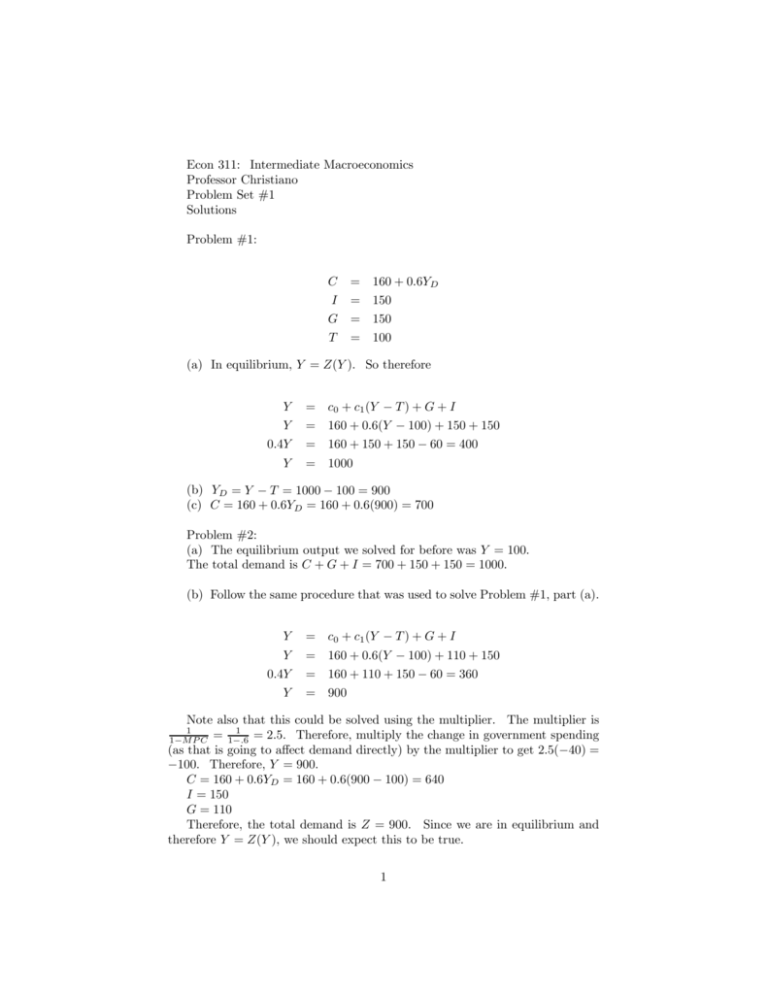
Econ 311: Intermediate Macroeconomics Professor Christiano Problem Set #1 Solutions Problem #1: C I G T = = = = 160 + 0.6YD 150 150 100 (a) In equilibrium, Y = Z(Y ). So therefore Y Y 0.4Y Y = = = = c0 + c1 (Y − T ) + G + I 160 + 0.6(Y − 100) + 150 + 150 160 + 150 + 150 − 60 = 400 1000 (b) YD = Y − T = 1000 − 100 = 900 (c) C = 160 + 0.6YD = 160 + 0.6(900) = 700 Problem #2: (a) The equilibrium output we solved for before was Y = 100. The total demand is C + G + I = 700 + 150 + 150 = 1000. (b) Follow the same procedure that was used to solve Problem #1, part (a). Y Y 0.4Y Y = = = = c0 + c1 (Y − T ) + G + I 160 + 0.6(Y − 100) + 110 + 150 160 + 110 + 150 − 60 = 360 900 Note also that this could be solved using the multiplier. The multiplier is 1 = 1−.6 = 2.5. Therefore, multiply the change in government spending (as that is going to affect demand directly) by the multiplier to get 2.5(−40) = −100. Therefore, Y = 900. C = 160 + 0.6YD = 160 + 0.6(900 − 100) = 640 I = 150 G = 110 Therefore, the total demand is Z = 900. Since we are in equilibrium and therefore Y = Z(Y ), we should expect this to be true. 1 1−MP C 1 (c) Private Savings are Y − C − T = 900 − 640 − 100 = 160. Public Savings are T − G = −10 Total Savings are private plus public savings, which is equal to 150, also equal to investment. In equilibrium, the demand is equal to the production, therefore it stands to reason that investment will be adequately financed through savings. If it weren’t, then we would not be in equilibrium. Problem #3: (a) An increase of 1 in G has a direct impact of 1 unit on demand, therefore 1 1 we take the change in demand and multiply it by the multiplier: 1−MP C = 1−c1 . (b) A decrease of 1 in T has a direct impact of c1 unit on demand because it affects disposable income, only a fraction c1 of which will get used for 1 consumption. Therefore, the effect is c1 1−c . 1 (c) The decrease in T has an indirect affect on demand because only a part of the tax reduction goes toward consumption. As c1 < 1, the effect of a unit decrease in T is going to be smaller than the effect of a unit increase in G. 1 1 (d) Simply subtract the two effects : 1−c − c1 1−c = 1. Therefore, any 1 1 1 unit increase in G with a matching increase in T will have a 1 unit increase in output. (e) As the c1 terms disappear from the multiplier in part (d), changing the MPC does not affect the multiplier in a balanced budget world. 2
